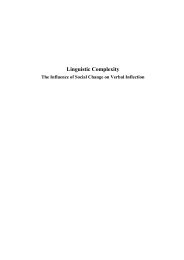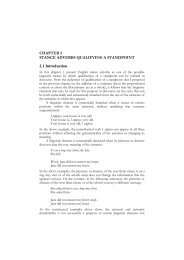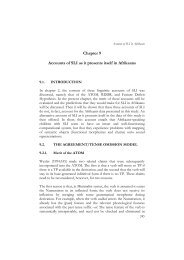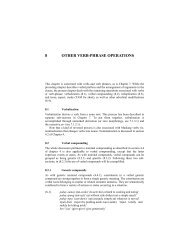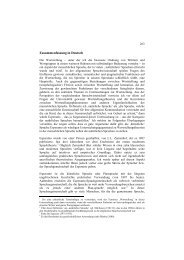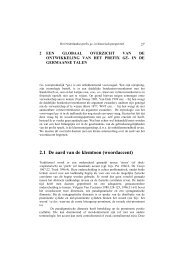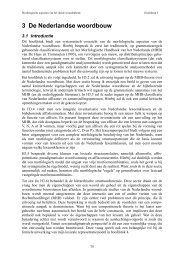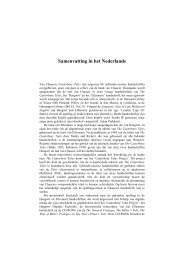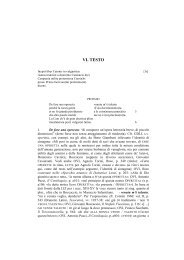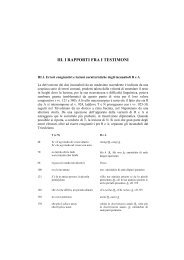Chapter 3 - LOT publications
Chapter 3 - LOT publications
Chapter 3 - LOT publications
Create successful ePaper yourself
Turn your PDF publications into a flip-book with our unique Google optimized e-Paper software.
66 Reduplicative coordination constructions<br />
(48) a. ?I can’t believe it! The government just puts off and puts off making any<br />
decisions on the pension crisis<br />
b. *The government put off making the decision intensively<br />
A predicate like put off is punctual and thus not compatible with a durative reading.<br />
For this reason an iterative reading is licensed. However, an adverb like ‘intensively’<br />
also cannot typically modify a non-durative predicate. Consider the following<br />
example with shoot.<br />
(49) *John shot the rabbit intensively<br />
This accounts for the ungrammaticality of (48b). Thus this example is not a counter<br />
example at all.<br />
To conclude, ReCo constructions denote durativity and intensiveness and consequently<br />
only predicates (including particle verbs) which are compatible with both durativity<br />
and intensiveness may be reduplicated. In some cases, where a punctual activity<br />
like shoot is involved, then a serial reading is parasitic on the durative readings.<br />
Having discussed some general properties of ReCo, it is now possible to place it<br />
in its pseudo-coordinative context by systematically applying the tests developed in<br />
chapter (2). In this chapter I will demonstrate that<br />
i. ReCo is a pseudo-coordinative structure, i.e. that ReCo is not OCo and<br />
ii. ReCo shares many properties of ConCo.<br />
Because ReCo has not been analysed as pseudo-coordination before, I will first<br />
focus on demonstrating that ReCo is not OCo. To this end, I will not necessarily retain<br />
the tests in the order in which they were introduced in chapter (2). Tests that indicate<br />
that ReCo is not an instance of OCo include the inability to substitute one coordinator<br />
with another, the incompatibility of ReCo and distributive markers like both, the fact<br />
that ReCo conforms to the Morphological Sameness Condition (99), the possibility<br />
of non-ATB extraction and quantifier raising, and also the inability of a subject (or<br />
indeed any XP) to occur in the second conjunct.<br />
Other tests show that ReCo patterns with ConCo. These tests include the absolute<br />
ban on XPs within the verbal string, the incompatibility of ReCo with partial VPdeletion,<br />
semantic bleaching, and the fact that ReCo constructions allow quantifier<br />
raising.<br />
3.2.2 Coordinator substitution<br />
A classic test for pseudo-coordination is whether or not the coordinator can be replaced<br />
by another (section (2.1.6)). Whereas OCo allows such substitution, pseudocoordination<br />
does not. The following examples can be compared with examples (29),<br />
(30) and (31). They demonstrate unequivocally that ReCo structures do not allow coordinator<br />
substitution and are thus indeed pseudo-coordinative structures.



